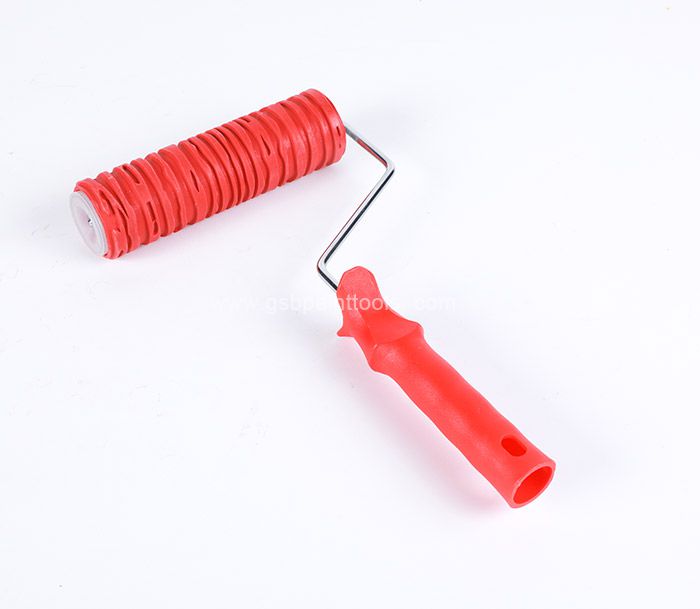- Automobiles & Motorcycles
- Beauty & Personal Care
- Business Services
- Chemicals
- Construction & Real Estate
- Consumer Electronics
- Electrical Equipment & Supplies
- Electronic Components & Supplies
- Energy
- Environment
- Excess Inventory
- Fashion Accessories
- Food & Beverage
- Furniture
- Gifts & Crafts
- Hardware
- Health & Medical
- Home & Garden
- Home Appliances
- Lights & Lighting
- Luggage, Bags & Cases
- Machinery
- Measurement & Analysis Instruments
- Mechanical Parts & Fabrication Services
- Minerals & Metallurgy
- Office & School Supplies
- Packaging & Printing
- Rubber & Plastics
- Security & Protection
- Service Equipment
- Shoes & Accessories
- Sports & Entertainment
- Telecommunications
- Textiles & Leather Products
- Timepieces, Jewelry, Eyewear
- Tools
- Toys & Hobbies
- Transportation
How to paint with patterned paint rollers
Painting with patterned paint rollers can add visual interest and texture to walls, furniture, and other surfaces. Here's a step-by-step guide on how to use patterned paint rollers effectively:
1. Prepare the Surface: Ensure that the surface you plan to paint is clean, dry, and free of dust or debris. If necessary, sand rough or uneven areas and repair any cracks or holes with spackling compound. Use painter's tape to mask off any areas you want to protect from paint.
2. Select the Patterned Paint Roller: Choose a patterned paint roller that complements your desired aesthetic and fits the scale of your project. Patterned paint rollers are available in a variety of designs, from geometric patterns to floral motifs. Consider the size of the roller and the repeat pattern to ensure consistent coverage.
3. Prepare the Paint: Pour the desired paint color into a paint tray and load the patterned paint roller by rolling it back and forth in the paint until evenly saturated. Avoid overloading the roller to prevent drips and ensure crisp, clean patterns.
4. Test the Roller: Before painting the entire surface, test the leaf patterned paint roller on a small, inconspicuous area to familiarize yourself with the technique and ensure satisfactory results. Adjust the pressure and speed of the roller as needed to achieve the desired pattern and coverage.

5. Apply the Paint: Once you're comfortable with the technique, begin applying the paint to the surface using the patterned paint roller. Roll the roller evenly and smoothly across the surface, overlapping each pass slightly to ensure consistent coverage. Maintain a steady rhythm and avoid stopping abruptly to prevent visible seams or irregularities in the pattern.
Further reading:The Benefits of Using drywall skim coat blade
How Does pipe clamp Work?
Key Questions to Ask When Ordering Which Pliers are Used to Get into Narrow Spaces
What are the various types of hammers?
10 Questions You Should Know about Combination Pliers vs Linesman Pliers
10 Questions You Should Know about Plexiglass Knife
Upcycle Your Home Decor with Carpenter Pincers: Which Projects Can You Tackle?
6. Work in Sections: Divide the surface into manageable sections and work systematically to ensure even coverage and consistent pattern alignment. Start at one corner or edge of the surface and work your way across and down, overlapping each section slightly to blend the patterns seamlessly.
7. Touch Up as Needed: Periodically step back and inspect your work to identify any areas that may require touch-ups or adjustments. Use a small paintbrush to correct any mistakes or fill in gaps in the pattern. Take your time and pay attention to detail to achieve professional-looking results.
8. Allow the Paint to Dry: Once you've completed painting with the patterned paint roller, allow the paint to dry completely according to the manufacturer's instructions. Avoid touching or disturbing the painted surface until the paint is fully cured to prevent smudges or smears.
9. Clean the Roller: After use, clean the patterned paint roller thoroughly with soap and water to remove any paint residue. Rinse the roller until the water runs clear, then allow it to dry completely before storing it for future use.
By following these steps and practicing your technique, you can achieve beautiful, decorative effects using 3d patterned paint rollers to enhance any space. Experiment with different patterns, colors, and surfaces to unleash your creativity and personalize your home decor.
How Does Kitchen Utensils Work?
How Does Power Tools for Sale Work?
What are the essential tools for electricians?
How Does Pinterest Marketing Work?
4 Advice to Choose the Best Construction Measuring Tools
Which hex key set is the best for DIY projects?
What are combination pliers used for? Combination pliers are versatile tools that are commonly used for gripping, twisting, cutting, bending, and holding various materials such as wires, cables, and s
Previous
Next
None
Related Articles
If you are interested in sending in a Guest Blogger Submission,welcome to write for us!












Comments
0